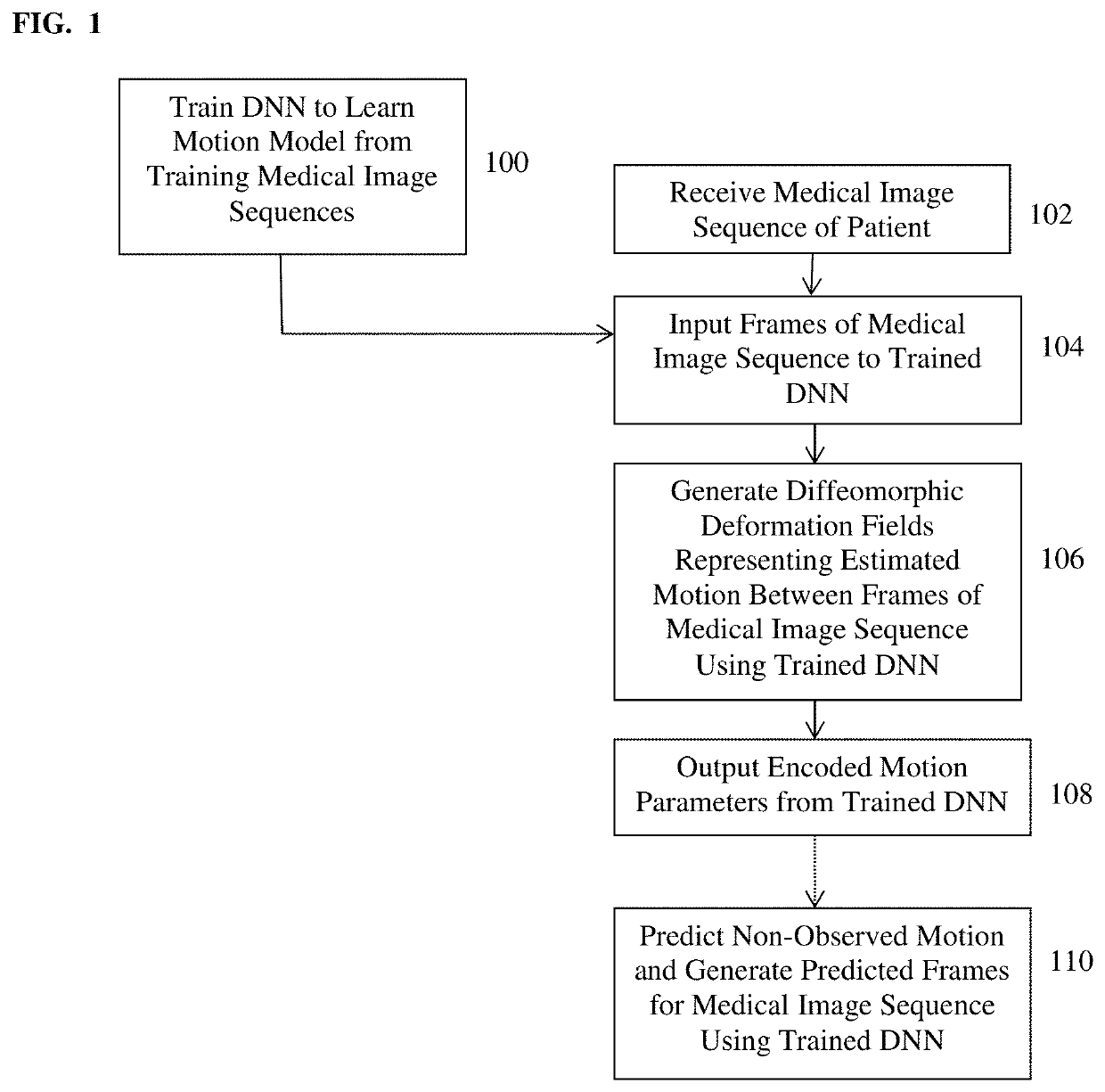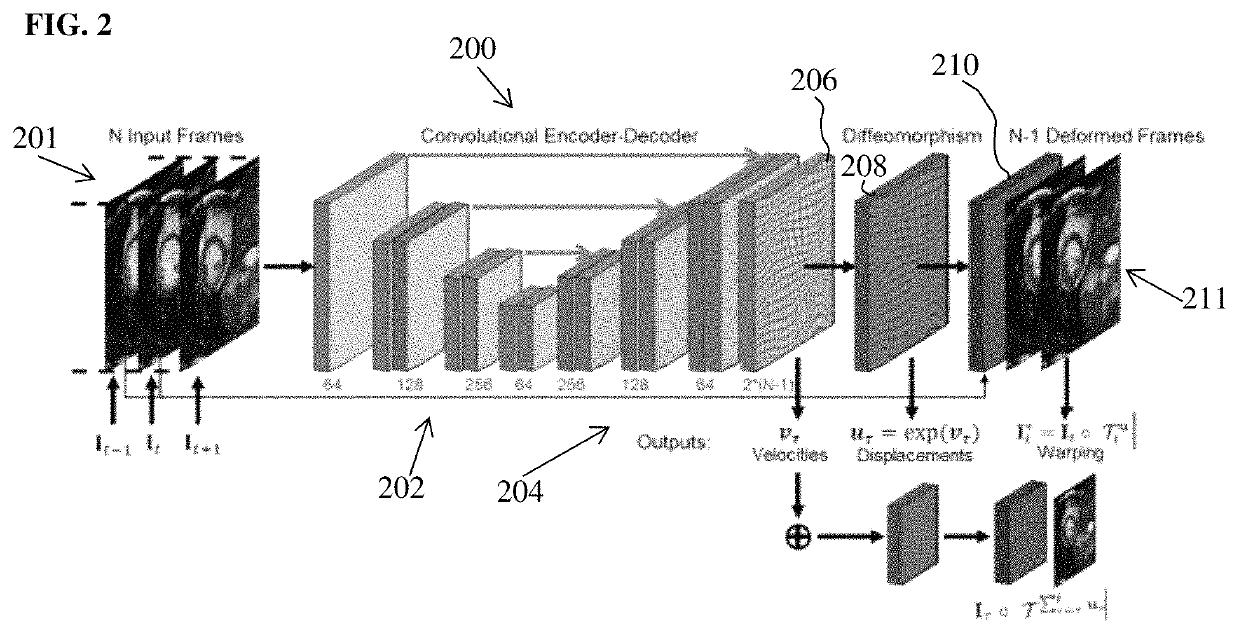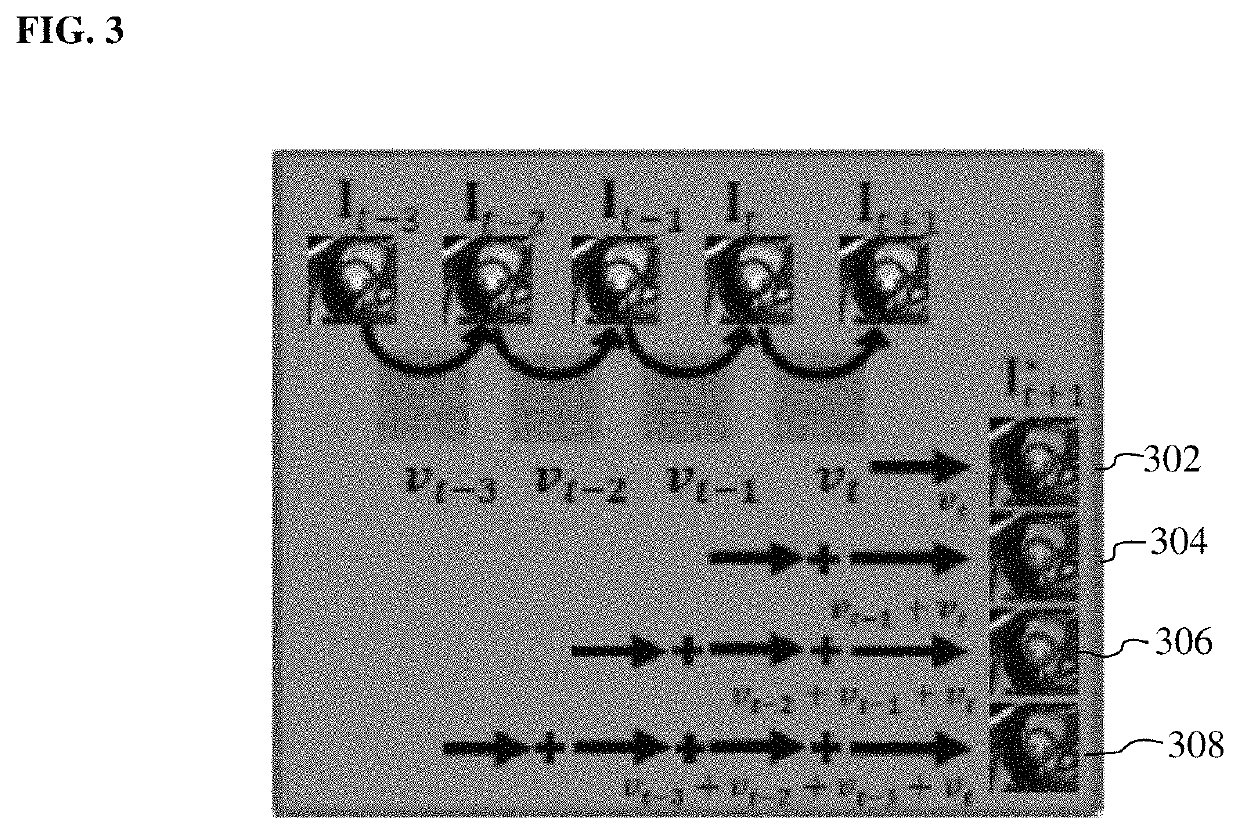Method and system for deep motion model learning in medical images
a motion model and deep learning technology, applied in image enhancement, image data processing, medical science, etc., can solve the problems of manual parameterization of motion models, inability to generalize to changes in image quality, and inability to robustly embed strong priors,
- Summary
- Abstract
- Description
- Claims
- Application Information
AI Technical Summary
Benefits of technology
Problems solved by technology
Method used
Image
Examples
Embodiment Construction
[0028]The present invention relates to computer-based motion estimation and modeling in medical images. A digital image is often composed of digital representations of one or more objects (or shapes). The digital representation of an object is often described herein in terms of identifying and manipulating the objects. Such manipulations are virtual manipulations accomplished in the memory or other circuitry / hardware of a computer system. Accordingly, is to be understood that embodiments of the present invention may be performed within a computer system using data stored within the computer system or a remote computer system.
[0029]Embodiments of the present invention provide systems and methods that learn a motion model by looking only at examples of image sequences. Embodiments of the present invention train a deep neural network (DNN) that learns to extract features that describe motion of an organ and learns the manifold of possible trajectories to estimate the observed organ mot...
PUM
 Login to View More
Login to View More Abstract
Description
Claims
Application Information
 Login to View More
Login to View More - R&D
- Intellectual Property
- Life Sciences
- Materials
- Tech Scout
- Unparalleled Data Quality
- Higher Quality Content
- 60% Fewer Hallucinations
Browse by: Latest US Patents, China's latest patents, Technical Efficacy Thesaurus, Application Domain, Technology Topic, Popular Technical Reports.
© 2025 PatSnap. All rights reserved.Legal|Privacy policy|Modern Slavery Act Transparency Statement|Sitemap|About US| Contact US: help@patsnap.com



